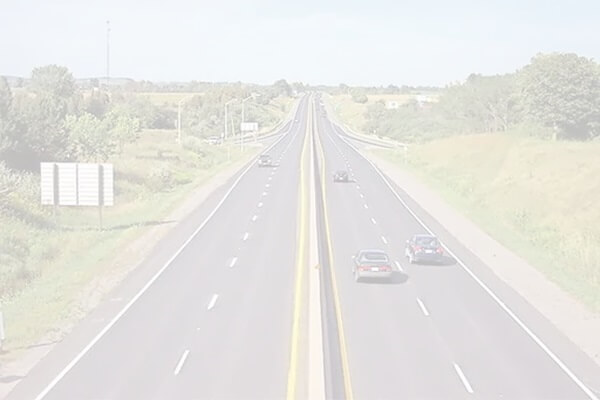Atal Progress Way: Transforming Connectivity in Central India
The Atal Progress Way, also known as Chambal Expressway or Atal Pragati Path, is poised to revolutionize the road transport landscape in India by enhancing connectivity between the states of Rajasthan, Madhya Pradesh, and Uttar Pradesh.
This ambitious project, named in honor of the former Prime Minister Atal Bihari Vajpayee, is a critical component of the Bharatmala Project Phase I, aimed at improving national highways and expressways throughout the country. With a planned length of 408 kilometers, this expressway is set to bring about significant economic and social benefits to the regions it connects.
Overview of the Atal Progress Way
The Atal Progress Way will commence from Seemalya in the Kota district of Rajasthan and traverse through the Sheopur and Morena districts in Madhya Pradesh, finally reaching Nanawa in the Etawah district of Uttar Pradesh. The expressway will cover a total of 408 kilometers, with approximately 309 kilometers in Madhya Pradesh, 72 kilometers in Rajasthan, and 23 kilometers in Uttar Pradesh. The total estimated cost of the project is ₹ 23,645 crore.
Key Features and Design
The expressway is designed as a four-lane highway with the potential for future expansion to six lanes, accommodating increasing traffic volumes. One of its notable features is its alignment alongside the Chambal River, which not only enhances scenic beauty but also serves as a vital resource for the surrounding areas.
The expressway will include an advanced traffic management system, emergency calling booths, CCTV surveillance, fuel stations, food outlets, medical care centers, and restrooms to ensure the safety and comfort of commuters.
The expressway is expected to facilitate an average speed of 120 km/h, significantly reducing travel time between major cities. Moreover, it will connect with various national highways and expressways, improving access to key urban centers and markets. This connectivity is particularly crucial for enhancing trade and logistics in the region.
Economic and Social Impacts
The construction of the Atal Progress Way is anticipated to generate numerous job opportunities in the surrounding districts. As industrial centers, logistics parks, agricultural production hubs, and smart cities emerge along the expressway, over 200 villages will benefit from increased economic activity. This project is not just about improving transportation; it’s also about fostering economic growth, attracting industries, and enhancing the overall quality of life for residents in the region.
Route Details
The Atal Progress Way will begin at Seemalya village in the Kota district, where it will connect to the Delhi-Mumbai Expressway, providing seamless access to one of India’s busiest corridors. Upon entering Madhya Pradesh, it will cover 313 kilometers, passing through key locations such as Sheopur, Sabalgarh, and Bhind, and will include an interchange in Morena for connectivity with the Agra-Gwalior Expressway.
In Uttar Pradesh, the expressway will terminate at Nanawa village, with a spur to connect to the Agra-Lucknow Expressway, further enhancing inter-state connectivity. This route will not only facilitate the movement of goods and services but also improve access to healthcare, education, and other essential services for local communities.
Also read: Pune Bangalore Expressway
Environmental Considerations and Challenges
Despite its numerous benefits, the Atal Progress Way project has encountered challenges, particularly concerning environmental sustainability. The National Green Tribunal (NGT) has raised concerns about the expressway’s impact on the eco-sensitive Chambal Valley. In response, the route has been modified to avoid critical ecological zones, resulting in the expressway now needing to cross ten rivers instead of eight.
Land acquisition has also been a significant hurdle. Initially, around 75% of the land required for the project was government-owned. However, the new route necessitates the acquisition of land that is predominantly privately owned, complicating the process and causing delays. The National Highway Authority of India (NHAI) is currently working on securing the necessary environmental clearances, which includes plans to pass through a small portion of the Kuno National Park.
Progress Update
As of June 2022, NHAI applied for the required environmental clearances and began the land acquisition process. In December 2022, NHAI floated tenders for the construction, with 16 companies submitting bids for the initial project packages in March 2023. These developments indicate a commitment to overcoming challenges and ensuring the timely completion of the Atal Progress Way.
Conclusion
The Atal Progress Way is more than just an infrastructure project; it is a catalyst for regional development, economic growth, and improved quality of life for millions of residents in Rajasthan, Madhya Pradesh, and Uttar Pradesh. By facilitating better connectivity and enhancing access to markets, education, and healthcare, this expressway has the potential to transform the socio-economic landscape of the Chambal region.
As the project progresses, it will be essential to balance the need for infrastructure development with environmental sustainability. The changes made to the route reflect a growing awareness of the importance of protecting natural ecosystems while pursuing economic growth. The successful completion of the Atal Progress Way will not only honor the legacy of Atal Bihari Vajpayee but also pave the way for a brighter future for the communities it connects. The journey toward completion may have its challenges, but the potential rewards for the region and its people make it a worthy endeavor.




Post Comment